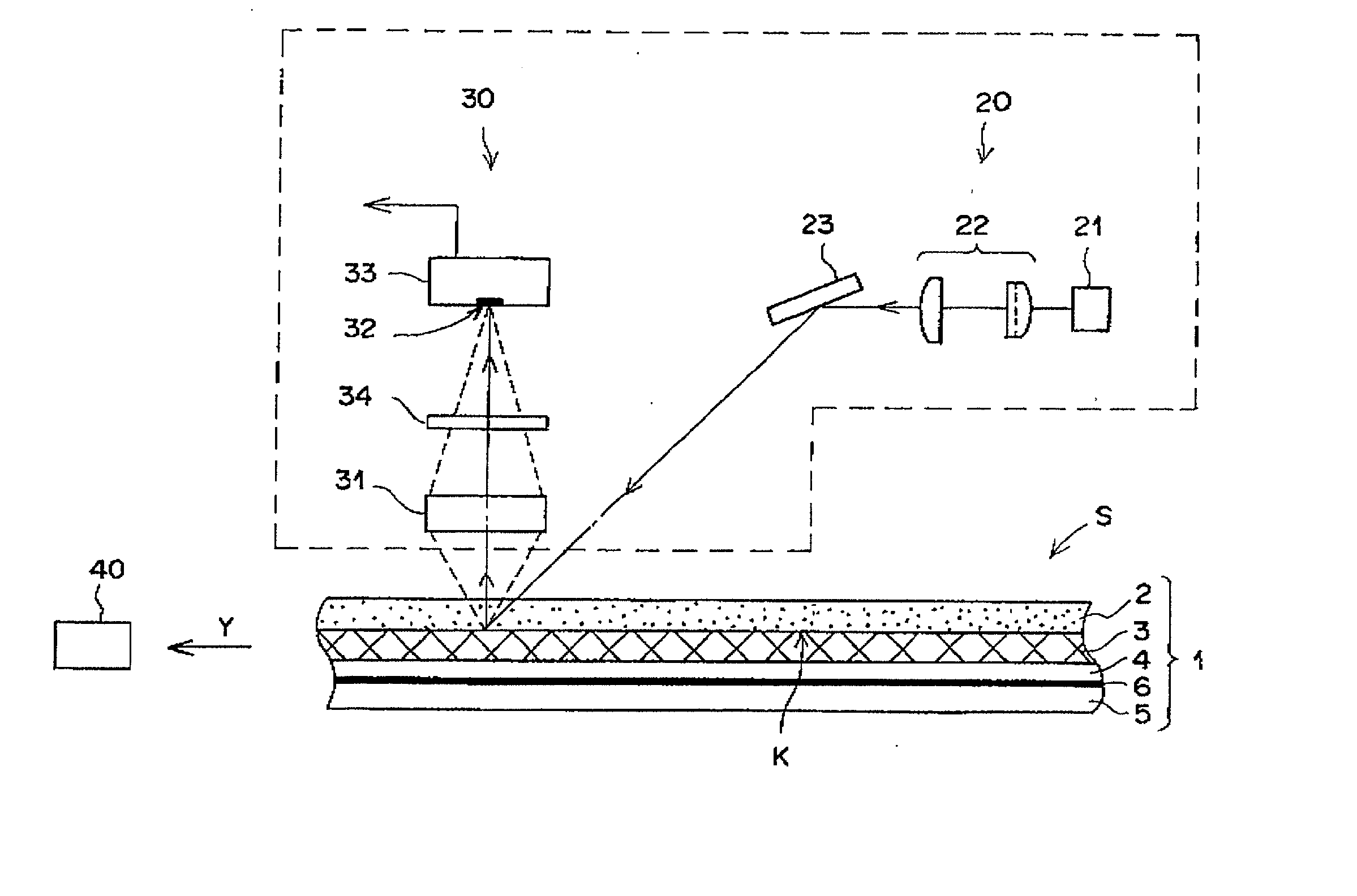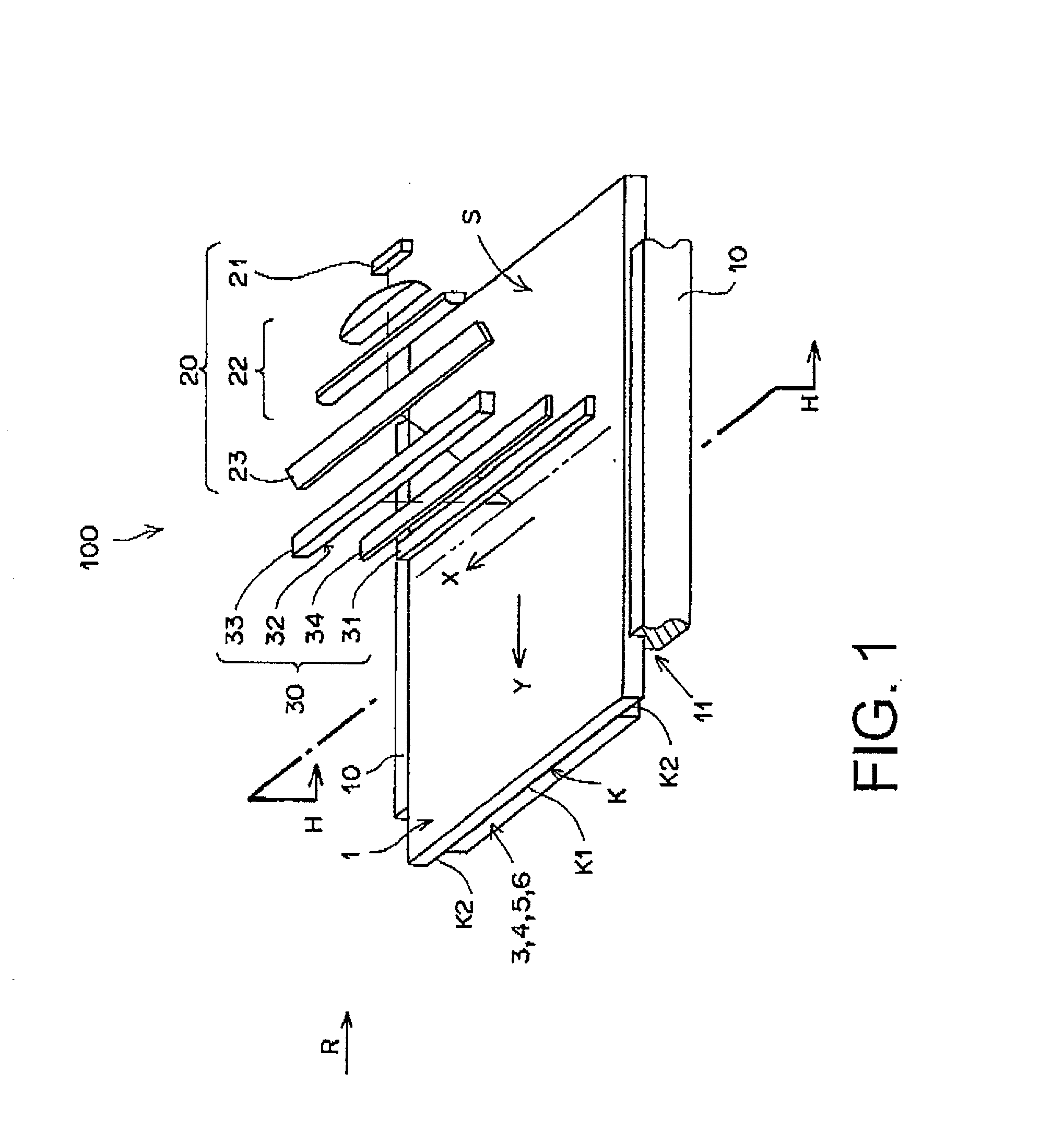Method for reading radiation image from stimulable phosphor sheet
a technology of stimulable phosphor and radiation image, which is applied in the direction of material analysis using wave/particle radiation, instruments, conversion screens, etc., can solve the problems of affecting image quality, affecting image quality, and almost impossible to make the surface have no irregularities
- Summary
- Abstract
- Description
- Claims
- Application Information
AI Technical Summary
Benefits of technology
Problems solved by technology
Method used
Image
Examples
example 2
[0143] 1) A stimulable phosphor (CsBr:Eu) was deposited on a glass plate (430 mm.times.450 mm, thickness: 0.63 mm) by an electron beam deposition method, to produce a stimulable phosphor sheet composed of the glass plate and a stimulable phosphor layer (410 mm.times.430 mm, thickness: approx. 500 .mu.m) in which prismatic phosphor crystals extending almost vertically from the glass plate were densely aligned.
[0144] 2) Separately, a glass spacer (thickness: 500 .mu.m) was formed on a circumferential area of a glass sheet (rigid protective sheet, 430 mm.times.450 mm, thickness: 8 mm) using a sealing adhesive resin (main component: acrylic resin.
[0145] 3) On the glass spacer was placed via adhesive the stimulable phosphor sheet under the conditions that the phosphor layer was enclosed with the spacer and the glass sheet and the phosphor layer did not become in contact with the glass sheet to produce an optically discontinuous space between the phosphor layer and the glass sheet, as ill...
example 3
[0148] 1) A stimulable phosphor (CsBr:Eu) was deposited on a glass plate (430 mm.times.450 mm, thickness: 8 mm) by an electron beam deposition method, to produce a stimulable phosphor sheet composed of the glass plate and a stimulable phosphor layer (410 mm.times.430 mm, thickness: approx. 500 .mu.m) in which prismatic phosphor crystals extending almost vertically from the glass plate were densely aligned.
[0149] 2) A transparent moisture-proof film (thickness: 60 .mu.m, GL-Au, available from Toppan Printing Co., Ltd.) was placed on the phosphor layer and the glass plate to adhere to the glass plate via adhesive, to form a protective layer, as illustrated in FIG. 16.
[0150] In FIG. 16, the stimulable phosphor sheet is composed of a protective layer 203, a deposited stimulable phosphor layer 201, and a glass plate (rigid plate) 204. The reference plane 202 corresponds to the exposed surface of the glass plate 204. This stimulable phosphor sheet is exposed to X-rays on the side of the u...
example 4
[0152] 1) A stimulable phosphor (CsBr:Eu) was deposited on a glass plate (rigid plate, 430 mm.times.450 mm, thickness: 8 mm) by an electron beam deposition method, to produce a stimulable phosphor sheet composed of the glass plate and a stimulable phosphor layer (410 mm.times.430 mm, thickness: approx. 500 .mu.m) in which prismatic phosphor crystals extending almost vertically from the glass plate were densely aligned.
[0153] 2) Separately, a glass spacer (thickness: 500 .mu.m) was formed on a circumferential area of a glass sheet (protective sheet, 430 mm.times.450 mm, thickness: 0.7 mm) using a sealing adhesive resin (main component: acrylic resin).
[0154] 3) on the glass spacer was placed via adhesive the stimulable phosphor sheet under the conditions that the phosphor layer was enclosed with the spacer and the glass sheet and the phosphor layer did not became in contact with the glass sheet to produce an optically discontinuous space between the phosphor layer and the glass sheet,...
PUM
 Login to View More
Login to View More Abstract
Description
Claims
Application Information
 Login to View More
Login to View More - R&D
- Intellectual Property
- Life Sciences
- Materials
- Tech Scout
- Unparalleled Data Quality
- Higher Quality Content
- 60% Fewer Hallucinations
Browse by: Latest US Patents, China's latest patents, Technical Efficacy Thesaurus, Application Domain, Technology Topic, Popular Technical Reports.
© 2025 PatSnap. All rights reserved.Legal|Privacy policy|Modern Slavery Act Transparency Statement|Sitemap|About US| Contact US: help@patsnap.com



